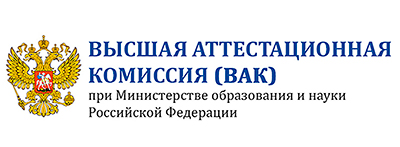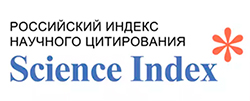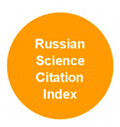Models of transition to adulthood of different Russian generations
Аннотация
This paper is devoted to the analysis of the starting events marking the transition to adulthood, such as completion of education (vocational and higher), first employment, first separation from parents, first partnership, first marriage, and first childbirth.
The dataset of the research is the Russian part of the Generations and Gender Survey (GGS). We prepared a harmonised dataset of the three waves (2004, 2007, and 2011), which included 5,451 respondents born between 1930 and 1986. We used two complementary approaches to study the transition to adulthood: the analysis of the starting sociodemographic events separately and the analysis of all of them as a part of one process. We depicted the results of the analysis on a demographic Lexis grid, which allowed us to observe the influence of the historical and institutional context on people’s behaviour.
The research revealed three models of transition to adulthood in Russia: “Soviet” (generations of 1940-49, 1950-59, and 1960-69), “Transitional” (generations of 1930-39 and 1970-79), and “Post-Soviet” (the generation of 1980-86). Our classification is similar to the idea of the convergence of the patterns of the starting events’ occurrence which assumes a change from the “traditional” model (“early, contracted and simple”) to the “modern” model (“late, protracted and complex”). The similarity of the changes in Russian and European models confirms the stadiality of the modernisation process. The study also confirms the assumption of the Life Course Approach about the individualisation of the life course.
Скачивания
Литература
Arkhangel'skij V.N. (2013). Reproduktivnoe i brachnoe povedenie [Reproductive and marital behavior]. Sociologicheskie issledovaniya [Sociological studies], 2, 129–136. (In Russ.).
Arnett J.J. (2012). New Horizons in Research on Emerging and Young Adulthood. In Early Adulthood in a Family Context (pp. 231–244). NY: Springer.
Artamonova A.V., Mitrofanova E.S. (2014). Is cohabitation an alternative to marriage in Russia? Political behavior: Race, Ethnicity & Identity Politics eJournal. 8(134). URL: https://hq.ssrn.com/Journals/IssueProof.cfm?abstractid=2513302&journalid=999052&issue_number=134&volume=8&journal_type=CMBO&function=showissue
Artamonova A.V., Mitrofanova E.S. (2018). Matrimonial'noe povedenie rossiyan na fone drugih evropejcev [Matrimonial behavior of Russians in the European context]. Demograficheskoe obozrenie [Demographic Review], 5(1), 106–137. (In Russ.).
Berger P., Luckmann T. (1966). The Social Construction of Reality: A Treatise in the Sociology of Knowledge. Garden City, NY: First Anchor.
Billari F.C., Giuntella O., Stella L. (2019). Does broadband Internet affect fertility? Population Studies, 73(3), 297-316. DOI: https://doi.org/10.1080/00324728.2019.1584327
Billari F.C., Hagestad G.O., Liefbroer A.C., Spéder Z. (2005). The Timing of Life: The Organization of the Life Course in Europe. In The timing of life: The organisation of the life course in Europe. URL: http://www.europeansocialsurvey.org/docs/round3/questionnaire/ESS3_billari_proposal.pdf
Billari F.C., Liefbroer A.C. (2007). Should I Stay or Should I Go? The Impact of Age Norms on Leaving Home. Demography, 44(1), 181-198. URL: https://link.springer.com/article/10.1353%2Fdem.2007.0000
Billari F.C., Liefbroer A.C. (2010). Towards a new pattern of transition to adulthood? Advances in Life Course Research, 15(2), 59–75.
Blum A., Lefèvre C., Sebille P., Badurashvili I., Régnier-Loilier A., Stankuniene V., Sinyavskaya O. (2010). Sem'ya v chetyrekh gosudarstvah: Franciya, Gruziya, Litva, Rossiya [Family in four states: France, Georgia, Lithuania, Russia]. In Evolyuciya sem'i v Evrope: Vostok-Zapad [Evolution of the Family in Europe: East-West] (pp. 11–41). Moscow: NISP. (In Russ.).
Blum A., Sebij P., Zakharov S.V. (2010). Vzroslenie vo Francii i Rossii: Razlichiya v perspektive pokolenij [Transition to adulthood in France and Russia: Differences in generational perspective]. In Evolyuciya sem'i v Evrope: Vostok-Zapad [Evolution of the Family in Europe: East-West] (pp. 141–174). Moscow: NISP. (In Russ.).
Buchmann M. (1989). The script of life in modern society: Entry into adulthood in a changing world. Chicago: University of Chicago Press.
Buchmann M.C., Kriesi I. (2011). Transition to Adulthood in Europe. Annual Review of Sociology, 37, 481-503. DOI: https://doi.org/10.1146/annurev-soc-081309-150212
Cavalli A., Galland O. (Eds.) (1993). L’allongement de la jeunesse. Paris: Actes Sud.
Chernova Zh.V. (2012). Specifika gendernyh otnoshenij molodyh vzroslyh [Specificity of gender relations of young adults]. Sociologicheskie issledovaniya [Sociological Studies], 7, 118–127. (In Russ.)
Dolbik-Vorobej T. (2003). Studencheskaya molodezh' o problemah braka i rozhdaemosti [Student youth about the problems of marriage and fertility]. Sociologicheskie issledovaniya [Sociological Studies], 11, 78–83. (In Russ.).
Ejrnœs A., Boje T.P. (2008). Family Policy and Welfare Regimes. In Report 3: Labour Market and social Policies. Aberdeen: University of Aberdeen.
Erikson E.H. (1995). Identity: Youth and Crisis. New York: W.W. Norton & Company.
Esping-Andersen G. (1990). The Three Worlds of Welfare Capitalism. NJ: Polity Press.
Esping-Andersen G. (2007). Family formation and family dilemmas in contemporary Europe. Fundacio´n BBVA.
Frejka T., Zakharov S. (2012). Comprehensive analyses of fertility trends in the Russian Federation during the past half century. Rostock: Max Planck Institute for Demographic Research (MPIDR working paper WP-2012-027).
Giddens A. (1994). Living in a post-traditional society. Reflexive modernization: Politics, tradition and aesthetics in the modern social order, 56, 100.
Gimpel'son V.E., Zudina A.A. (2017). Demograficheskie problemy rynka truda [Demographic problems of the labour market]. Demoscope Weekly, 729–730. (In Russ.). URL: http://www.demoscope.ru/weekly/2017/0729/tema01.php
Gradoselskiy V. (2005). Komplektovanie vooruzhennih sil SSSR v 1970—1980-е gody [Completion of Soviet Union armed forces in 1970-1980]. Voenno-istoricheskiy zhurnal [War-historical Journal], 9, 18-21. (In Russ.).
Hajnal J. (1965). European marriage patterns in perspective. In Glass D.V., Eversley D.E. (Eds.), Population in history: Essays in historical demography (pp. 101–143). URL: https://www.popline.org/node/517620
Heinz W.R., Marshall V.W. (2003). Social dynamics of the life course: Transitions, institutions, and interrelations. New York: Aldine de Gruyter.
Huinink J. (2013). De-Standardisation or Changing Life Course Patterns? Transition to Adulthood from a Demographic Perspective. In The Demography of Europe (pp. 99–118). Springer, Dordrecht. DOI: https://doi.org/10.1007/978-90-481-8978-6_5
Inglhart R. (2018). Kul'turnaya evolyuciya. Kak izmenyayutsya chelovecheskie motivacii i kak eto menyaet mir [Cultural evolution. How human motivations change and how it changes the world]. (In Russ.). URL: https://sotsium.ru/uploads/files/demo-mysl/inglehart_p1-40.pdf
Kiernan K. (2002). Cohabitation in Western Europe: Trends, issues and implications. In Booth A., Crouter A. (Eds.), Just Living Together: Implications of cohabitation on families, children and social policy (pp. 3–31). New York: Lawrence Erlbaum Associates.
Konstantinovskij D.L. (2008). Neravenstvo i obrazovanie. Opyt sociologicheskih issledovanij zhiznennogo starta rossijskoj molodezhi (1960-e gody–nachalo 2000-h) [Inequality and education. Experience of sociological research of life start of Russian youth (1960s-early 2000s)]. Moscow: Centr social'nogo prognozirovaniya. (In Russ.)
Lapeto A., Tereshchenko O.V., Shaverdo T. (2018). Perekhod v samostoyatel'nuyu zhizn': Vozrastnye modeli zhiznennyh putej [Transition to independent life: Age models of life paths]. In O. Tereshchenko, T. Kuchera (Eds.), Belarus': Struktura sem'i, semejnye otnosheniya, reproduktivnoe povedenie: Tom II. Analiz rezul'tatov issledovaniya «Pokoleniya i gender» [Belarus: Family structure, family relations, reproductive behavior: Vol. II. Analysis of the results of Generations and Gender Survey] (pp. 14–22). Minsk: Belsens. (In Russ.)
Lesthaeghe R. (1995). The second demographic transition in Western countries: An interpretation. In Gender and family change in industrialized countries (pp. 17–62). Oxford: Clarendon Press.
Lesthaeghe R., Neels K. (2002). From the First to the Second Demographic Transition: An Interpretation of the Spatial Continuity of Demographic Innovation in France, Belgium and Switzerland European. Journal of Population, 18(4), 325–360.
Liefbroer A.C. (1999). From Youth to Adulthood: Understanding Changing Patterns of Family Formation from a Life Course Perspective. In Population Issues (pp. 53–85). The Netherlands: Springer.
Magun V.S., Engovatov M.V. (2006). Dinamika prityazanij i izmenenie resursnyh strategij molodezhi: 1985-2005 gody [Trends in claims and changes in resource strategies of young people: 1985-2005]. Otechestvennye zapiski [Annals of the Fatherland], 3, 76–96. (In Russ.)
Mead M. (1988). Kul'tura i mir detstva [Culture and the world of childhood]. Moscow: Nauka. (In Russ.)
Mills M. (2004). Stability and change: The structuration of partnership histories in Canada, the Netherlands, and the Russian Federation. European Journal of Population/Revue européenne de Démographie, 20(2), 141–175.
Potârcă G., Mills M., Lesnard L. (2013). Family Formation Trajectories in Romania, the Russian Federation and France: Towards the Second Demographic Transition? European Journal of Population/Revue européenne de Démographie, 29(1), 69–101. DOI: https://doi.org/10.1007/s10680-012-9279-9
Puur A., Rahnu L., Maslauskaite A., Stankuniene V. (2012a). Past and present patterns of family formation in Eastern Europe: Does Hajnal’s delineation still matter? Filosofija Sociologija, 23(4), 256–265.
Puur A., Rahnu L., Maslauskaite A., Stankuniene V., Zakharov S. (2012b). Transformation of Partnership Formation in Eastern Europe: The Legacy of the Past Demographic Divide. Journal of Comparative Family Studies, 43(3), 389–417.
Remshmidt H. (1994). Podrostkovyj i yunosheskij vozrast: Problemy stanovleniya lichnosti [Adolescence and youth: Problems of personality formation]. (In Russ.) URL: http://www.childpsy.ru/lib/books/id/8335.php
Rindfuss R.R. (1991). The Young Adult Years: Diversity, Structural Change, and Fertility. Demography, 28(4), 493–512. URL: https://link.springer.com/article/10.2307%2F2061419
Salyakhieva L.M., Saveleva Z.V. (2017). Childfree as a Social Phenomenon: Russians’ Attitude to Voluntary Childlessness. Tarih Kültür ve Sanat Araştırmaları Dergisi, 6(4), 531–537. DOI: https://doi.org/10.7596/taksad.v6i4.1144
Shabunova A.A., Kalachikova O.N. (2015). Problemy transformacii demograficheskih institutov: Sem'ya i brak [Challenges to the transformation of demographic institutions: Family and marriage]. Sociologicheskij al'manah [Sociological almanac], 6, 151–165. (In Russ.)
Shoven J.B., Goda G.S. (2011). Adjusting Government Policies for Age Inflation. In Demography and the Economy (pp. 143–168). DOI: https://doi.org/10.7208/chicago/9780226754758.003.0005
Sobotka T., Toulemon L. (2008). Changing family and partnership behaviour: Common trends and persistent diversity across Europe. Demographic Research, 19, 85–138. DOI: https://doi.org/10.4054/DemRes.2008.19.6
van de Kaa D. J. (1987). Europe’s Second Demographic Transition. Population Bulletin, 42, 3–57.
Vil'danova S.M., Granichnaya A.A., Mingalieva A.R., Salyahieva L.M. (2017). Tendencii rasprostraneniya cennostej chajldfri v Rossii i ih vliyanie na krizis instituta sem'i [Trends in the spread of childfrey values in Russia and their impact on the crisis of the institution of the family]. Monitoring obshchestvennogo mneniya: Ekonomicheskie i social'nye peremeny [Monitoring of Public Opinion: Economic and Social Changes Journal], 3(139), 192–205. (In Russ.).
Vishnevsky A.G. (1976). Demograficheskaja revolutsija. Moscow: Statistics. (In Russ.).
Vishnevsky A.G. (Ed.) (2006). Demograficheskaja modernizacija Rossii, 1900–2000 [Demographic modernization of Russia, 1900–2000]. Moscow: Novoe izdatel'stvo. (In Russ.).
Vogel J. (2002). European Welfare regimes and the transition to adulthood: A comparative and longitudinal perspective. Social Indicators Research, 59, 275–299.
Yarskaya-Smirnova E.R., Romanov P.V. (Eds.) (2008). Sovetskaya social'naya politika: sceny i dejstvuyushchie lica, 1940-1985 [Soviet social policy: scenes and actors, 1940-1985]. Moscow: OOO Variant, CSPGI. (In Russ.)
Zakharov S. (2008). Russian Federation: From the first to second demographic transition. Demographic Research, 19, 907–972. DOI: https://doi.org/10.4054/DemRes.2008.19.24
Zakharov S.V. (2007). Transformaciya brachno-partnerskih otnoshenij v Rossii: «zolotoj vek» tradicionnogo braka blizitsya k zakatu? [Transformation of marriage-partnership relations in Russia: the "golden age" of traditional marriage is nearing sunset?]. In T.M. Maleva, O.V. Sinyavskaya (Eds.), Roditeli i deti, muzhchiny i zhenshchiny v sem'e i obshchestve [Parents and children, men and women in the family and society]. Vol. 1 (pp. 75–127). Moscow: NISP. (In Russ.).
Zakharov S.V. (2009). Cennostno-normativnye «raspisaniya» chelovecheskoj zhizni: Predstavleniya zhitelej raznyh stran o tom, kogda devushka stanovitsya vzrosloj [Value-normative "schedules" of human life: Perceptions of people in different countries about when a girl becomes an adult]. In Rossiya v Evrope. Po materialam mezhdunarodnogo proekta «Evropejskoe social'noe issledovanie». [To Russia in Europe. Based on the international project "European Social Study"] (pp. 347–379). Moscow: Academia. (In Russ.).
Zdravomyslova O. M., Shurygina I.I. (2001). Vyzhit' ili preuspet': Predstavleniya starsheklassnikov o svoih zhiznennyh shansah [Survive or succeed: High school students "perceptions of their life chances]. In Kto i kuda stremitsya vesti Rossiyu? Aktory makro-, mezo- i mikrourovnej sovremennogo transformacionnogo processa [Who and Where Does Russia Seek to Lead? Actors of macro-, meso- and micro-levels of the modern transformation process] (pp. 366–374). (In Russ.). URL: http://ecsocman.hse.ru/data/250/679/1219/048.Zdravomyslova.pdf
Zsolt S., Murinkó L., Settersten Jr.R.A. (2014). Are Conceptions of Adulthood Universal and Unisex? Ages and Social Markers in 25 European Countries. Social Forces, 92(3), 873–898. DOI: https://doi.org/10.1093/sf/sot100
























